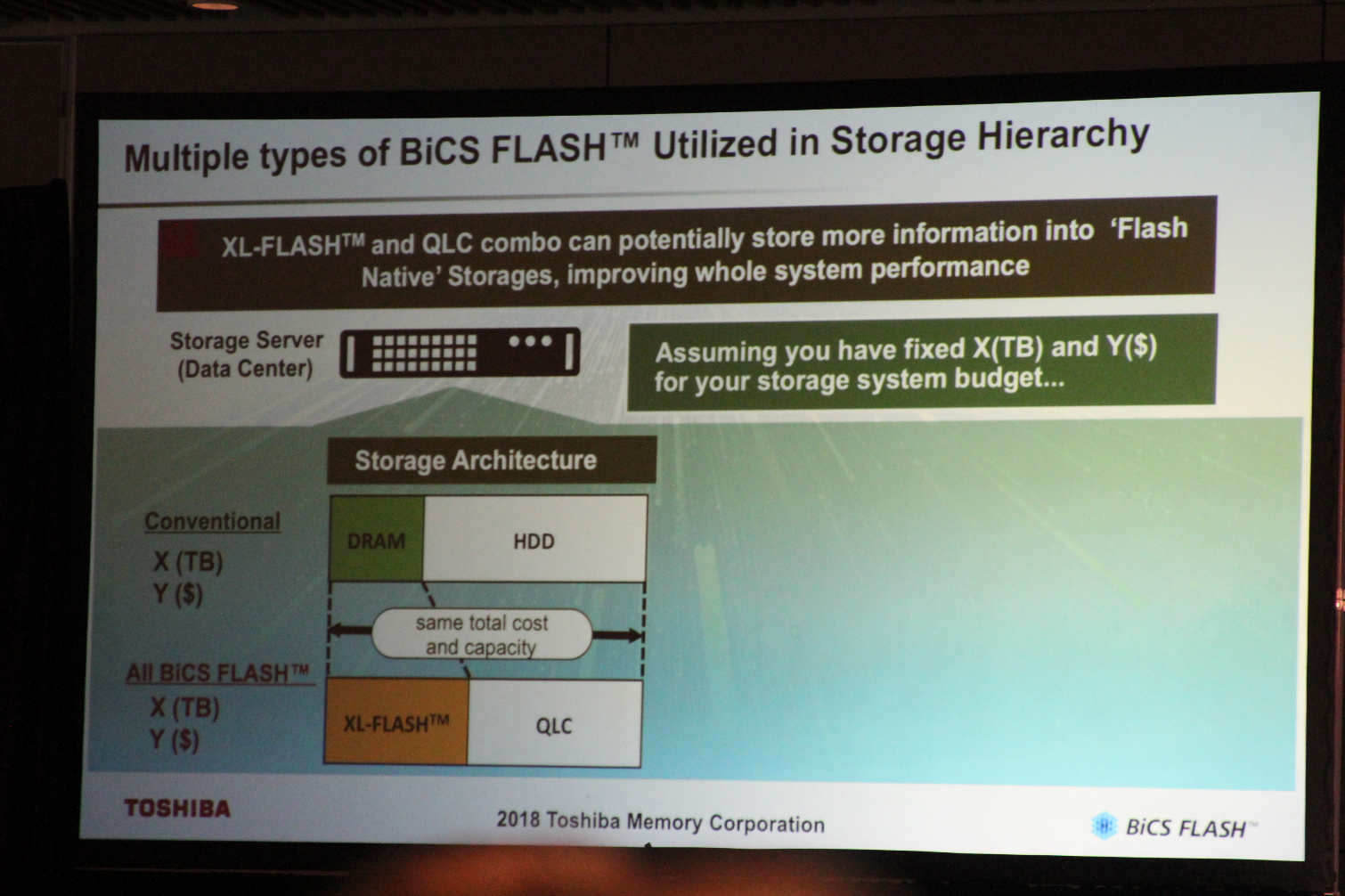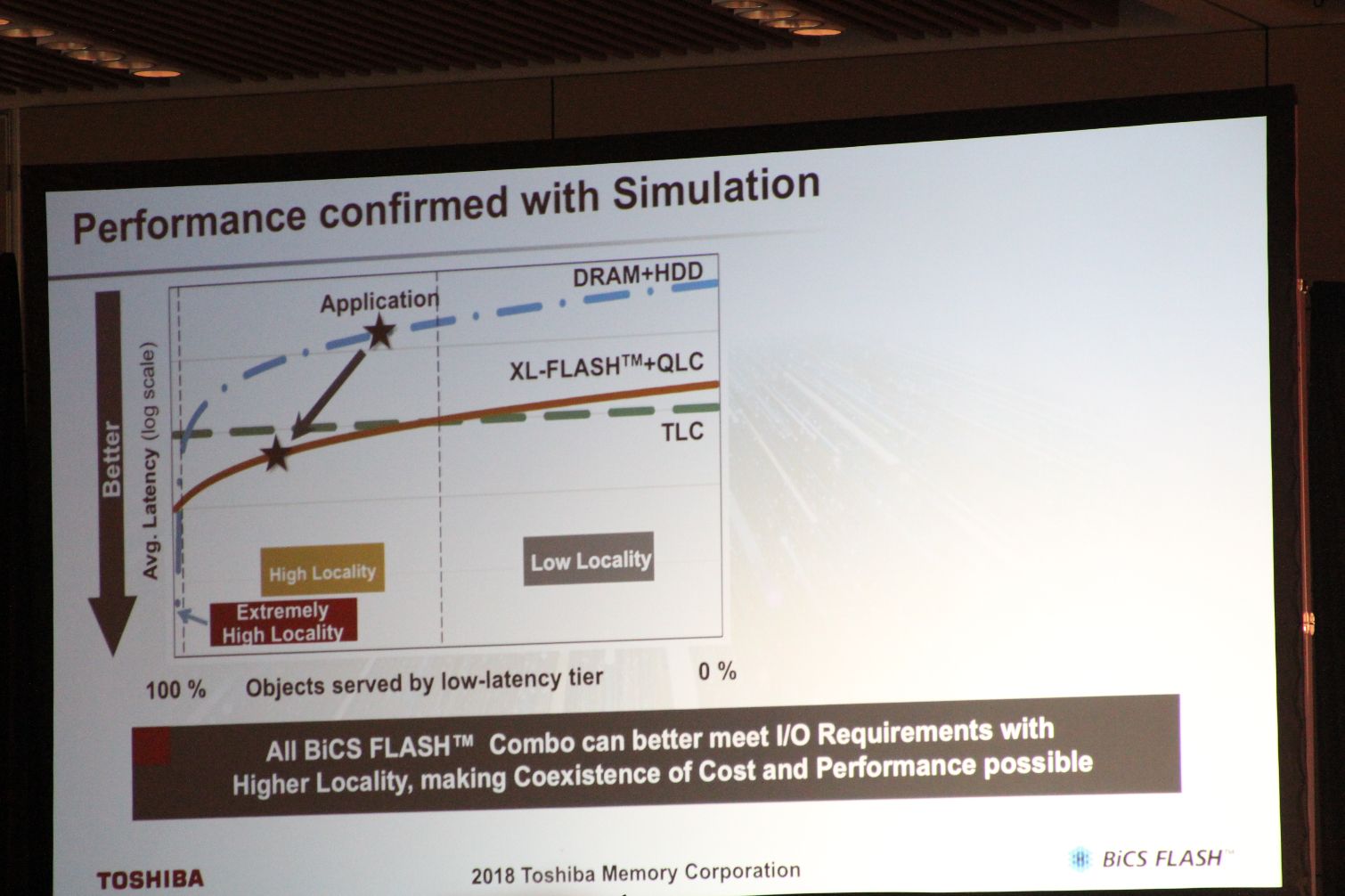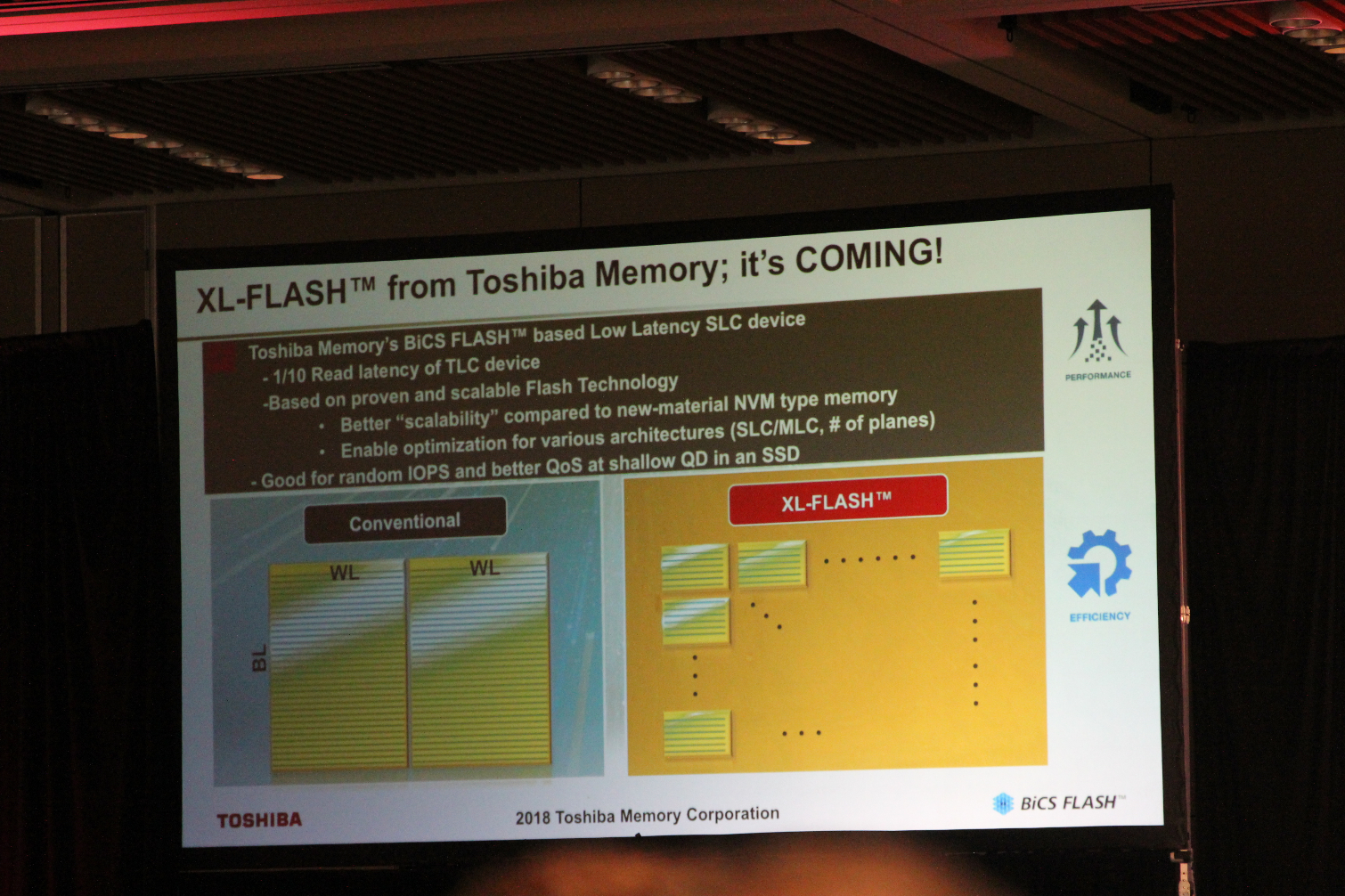Toshiba Takes On Optane With 3D XL-Flash: High Performance Meets Low Cost
Toshiba announced at the Flash Memory Summit that it's developing 3D XL-Flash, which is a high-performance variant of existing flash that purportedly provides a 10X reduction in read latency compared to the TLC flash found in most consumer SSDs. The move comes as a somewhat belated response to Intel's high-performance Optane products that are powered by the exotic, and expensive, 3D XPoint memory.
In theory, Toshiba's XL-Flash sounds very similar to Samsung's Z-NAND, which also competes with Intel's Optane. Both new types of NAND offer enough performance to come within striking range of Intel's Optane in the performance measurements that matter, but will come at a much lower price point because they use proven technologies that the companies already produce on a massive scale. Ultimately, that means the new type of flash can undercut Intel's Optane on price by a significant amount, but Toshiba hasn't shared specifics yet.
Speedy Optane memory has come to market as both storage and caching devices, but high prices have kept the devices, which are significantly faster than normal SSDs, from replacing flash-based SSDs. Currently, Optane retails for roughly $0.60 per GB, but normal flash-based SSDs can dip as low as $0.15 per GB. The 4X price premium might seem reasonable for a superior device, but latency introduced by the drive's controller and firmware, along with the interface and the file system, ultimately reduce much of Optane's performance advantage in real-world applications. That leaves an opening for devices that are cheap and "good enough."
Toshiba's new flash memory features shorter bitlines and wordlines, which are internal connections to the flash cells, to improve performance. The flash also has more planes, which are independent regions of the flash that can respond to data requests simultaneously, to improve parallelism, and thus performance. XL-Flash is based on Toshiba's tried-and-true BiCS flash, but Toshiba uses the existing flash in SLC mode, meaning it only stores one bit per cell to increase performance.
As a result, XL-Flash provides program times of a mere 7 microseconds, which is much faster than QLC's 30 microsecond program time. Of course, the increased performance comes at the expense of storage density, but Toshiba obviously feels the high performance will offset the die capacity reduction.


At first, Toshiba will use XL-Flash as SLC cache to complement its QLC flash, as a high-performance cache for the larger and cheaper QLC flash devices. Toshiba claims the pair can offer better overall latency than DRAM paired with an HDD storage pool. Much of this advantage is due to XL-Flash's capacity advantage over DRAM, which allows for more cache hits during real-world workloads.
Toshiba will start with SLC-based XL-Flash devices but is considering MLC variants of the high-performance flash as well. The initial products are destined for the data center, but like most high-performance tech, it should filter down to the desktop PC in due course.
Get Tom's Hardware's best news and in-depth reviews, straight to your inbox.

Paul Alcorn is the Editor-in-Chief for Tom's Hardware US. He also writes news and reviews on CPUs, storage, and enterprise hardware.
-
jimmysmitty The two biggest advantages I see with Optane are the consistent IOPS, where most others tend to fall off after certain QDs Optane typically stays consistent, and the NVDIMMs.Reply
Now NVDIMMs are not available to consumers yet. With Cascade Lake-SP servers they can take Optane NVDIMMs up to 8TB for 8S systems. Once that trickles down to consumers that would be the biggest game changer. To be able to shove 1TB of Optane into a memory slot and allocate 32GB of that to system RAM and the rest to storage will help to remove one of the largest bottlenecks we currently have, disk drives.
Yes NVMe is a big boon to helping that as it uses PCIe lanes its vastly faster than SATA but it still is not as fast as system RAM.
These are the two advantages that Toshiba will have to match to truly compete with it. -
derekullo I'll take medium sized monitor, small coolant and an extra large flash.Reply
With everything being smaller and faster they sure picked an ambiguous name. -
Giroro So Toshiba's entire pitch is basically " We invented what is basically an SLC SSD, look how much better it performs vs our terrible QLC and spinning disk HDDs"?Reply
Oh, but you can also pair their fancy new not-SLC with QLC? Who knew this was a new innovation instead of something that is absolutely necessary to make a QLC drive meet basic functionality expectations for low-quality consumer drives ... Neat.
If their pseudo-SLC was really that much better, they would be comparing it to other versions of SLC and 3D Xpoint, instead they feel the need to compare XL-buzzword to the worst-performing NAND ever manufactured. -
mikewinddale "To be able to shove 1TB of Optane into a memory slot and allocate 32GB of that to system RAM"Reply
I'm not sure that would help. Optane is still much slower than DRAM. Using 32 GB of Optane instead of 32 GB of DRAM will just lower your performance.
The benefit of Optane-as-RAM is that the storage capacity is so much higher. Optane allows datacenters and workstations to have terabytes of what is effectively slow RAM. If you've got a several-terabyte database, then having mere GB of DRAM forces you to keep swapping out portions of the database between RAM and storage. Having TB of Optane as RAM would allow you to keep the entire database in RAM. Even though Optane is slower than DRAM, the benefit of keeping your entire TB database in RAM would more than make up for it.
But if you've got only 32 GB of RAM, then switching to Optane wouldn't benefit you. -
jimmysmitty Reply21214921 said:"To be able to shove 1TB of Optane into a memory slot and allocate 32GB of that to system RAM"
I'm not sure that would help. Optane is still much slower than DRAM. Using 32 GB of Optane instead of 32 GB of DRAM will just lower your performance.
The benefit of Optane-as-RAM is that the storage capacity is so much higher. Optane allows datacenters and workstations to have terabytes of what is effectively slow RAM. If you've got a several-terabyte database, then having mere GB of DRAM forces you to keep swapping out portions of the database between RAM and storage. Having TB of Optane as RAM would allow you to keep the entire database in RAM. Even though Optane is slower than DRAM, the benefit of keeping your entire TB database in RAM would more than make up for it.
But if you've got only 32 GB of RAM, then switching to Optane wouldn't benefit you.
Optane is still faster than even a PCIe SSD or NVMe. Its not as fast as top end RAM no but it would still be a benefit to performance.
